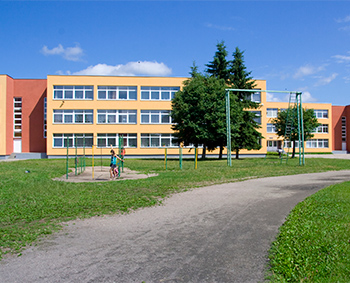
Audubon Adventures

Activities
 Activity 3
Activity 3
Schoolyard Habitat Survey

 Teacher-led Classroom/Field Activity
Teacher-led Classroom/Field Activity
Science, Language Arts
What does the schoolyard offer wildlife? How can this habitat be improved?
Objective:
Students survey the schoolyard or other nearby area in terms of its suitability as habitat for wildlife, and create an action plan for improving the habitat.
 Students will need:
Students will need:
- “Schoolyard Habitat Survey” reproducible activity sheet (one for each student)
- Naturalist’s Journals
- Pencils and paper
- Field guides and other resources for identifying wildlife, trees, and plants
Suggested time:
One class period for conducting the initial schoolyard or neighborhood area survey; class or homework time for doing follow-up research; additional class time and homework time for discussions and group work
What to do:
- Have a discussion with the class about what a habitat is—a place where living things (animals as well as plants) are able to get what they need for survival—food, water, shelter, space.
- Explain to students that they will be analyzing their schoolyard or another local area in terms of its suitability as habitat for wildlife.
- If possible, invite a representative from your state’s Extension Service (look at your local government’s website) or your local Audubon chapter or center, or some other knowledgeable individual to visit the class and talk about native plants and their role in healthy habitats.
- Take the class on a field trip to the school grounds or other nearby area. During this trip, students will use their activity sheets to collect preliminary information about the area as habitat—the kinds and numbers of trees, shrubs, and other plants; other features of the area that affect its use as habitat (e.g., availability of water).
- Back in the classroom, students use field guides and other information resources to identify the trees and plants they observed. In addition, they should learn about wildlife that might make use of this type of habitat.
- Bring the class together to discuss what they’ve observed and to develop an action plan for improving this habitat by planting native trees and plants, providing cover for birds and small mammals, providing a source of fresh water, and so on.
- Have students present their action plan to the school administration or parent group and work to implement it.
Photos: (t to b) Trude Hurd; depositphotos.




